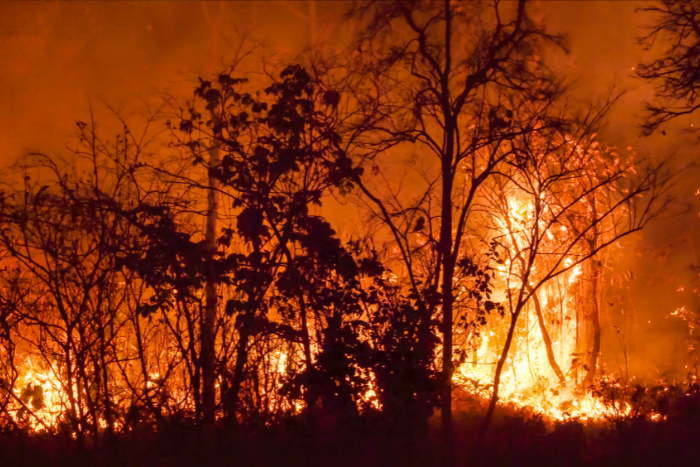With the global average near surface temperature at 1.45 °C above the pre industrial baseline, 2023 saw record breaking ocean heat and sea level rise, as extreme weather continued to undermine socio-economic development
Records for greenhouse gas levels, surface temperatures, ocean heat and acidification, sea level rise, Antarctic sea ice cover and glacier retreat were once again broken, and in some cases “smashed”, according to a new report from the World Meteorological Organization (WMO).
The State of the Global Climate 2023 report said that 2023 was the warmest year on record, with the global average near surface temperature at 1.45°C (with a margin of uncertainty of ± 0.12°C) above the pre industrial baseline. It was the warmest ten-year period on record.
“Smashed records”: GHGs, ocean heat, sea level rise and glacier melt
The report found that observed concentrations of the three main greenhouse gases – carbon dioxide, methane, and nitrous oxide— reached record levels in 2022. Real-time data from specific locations showed a continued increase in 2023. CO2 levels are 50 % higher than the pre-industrial era, trapping heat in the atmosphere. The long lifetime of CO2 means that temperatures will continue to rise for many years to come.
In 2023, global mean sea level reached a record high in the satellite record (since 1993), reflecting continued ocean warming (thermal expansion) as well as the melting of glaciers and ice sheets. The rate of global mean sea level rise in the past ten years (2014–2023) is more than twice the rate of sea level rise in the first decade of the satellite record (1993–2002), added the report.
In 2023, a marine heatwave affected almost one-third of the world’s ocean on a typical day, damaging food chains and important ecosystems. By the end of 2023, more than 90% of the ocean had at some time in the year experienced heatwave conditions. The report said that the global set of reference glaciers saw the greatest ice loss on record (since 1950), primarily due to significant melt in both western North America and Europe. Antarctic sea ice extent was by far the lowest on record, with the maximum extent at the end of winter at 1 million km2 below the previous record year— equivalent to the size of France and Germany combined.
Socio-economic impacts
According to the report, extreme weather and climate events had major socio-economic impacts on all inhabited continents. Weather and climate hazards exacerbated challenges with food security, population displacements and impacts on vulnerable populations.
The report said that the number of people who are acutely food insecure worldwide has more than doubled, from 149 million people before the COVID-19 pandemic to 333 million people in 2023 (in 78 monitored countries by the World Food Programme).
State of solutions: Renewable energy and climate finance
Renewable energy generation has risen to the forefront of climate action. The report estimated that in 2023, renewable capacity additions increased by almost 50% from 2022, for a total of 510 gigawatts (GW). Such growth marked the highest rate observed in the past two decades.
Moving on to climate finance, global climate-related finance flows reached almost $1.3 trillion in 2021-2022, nearly doubling compared to 2019-2020 levels. However, there is a large financing gap as tracked climate finance flows represent only approximately 1% of global GDP.
In an average scenario, for a 1.5°C pathway, annual climate finance investments need to grow by more than six times, reaching almost $9 trillion by 2030 and a further $10 trillion through to 2050.
The cost of inaction is even higher, the report warned. Aggregating over the period 2025-2100, the total cost of inaction is estimated at $1,266 trillion; that is, the difference in losses under a business-as-usual scenario and those incurred within a 1.5°C pathway. This figure is, however, likely to be a dramatic underestimate.
About The Author
You may also like
22 July goes down as the world’s hottest day on record
Tropical forest biodiversity at high risk from climate change due to temperature change under canopies: Study
India’s June rainfall 11% below normal, fifth-lowest since 2020
With record breaking rain and heat, Uttarakhand reels under climate change impacts
Earth surpasses 1.5°C warming threshold for 12 months in a row


